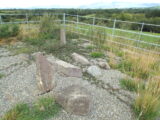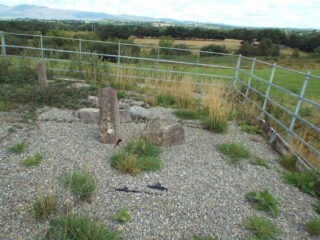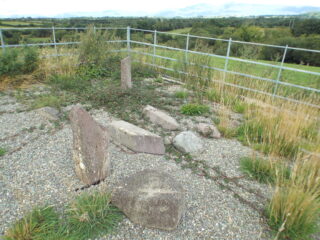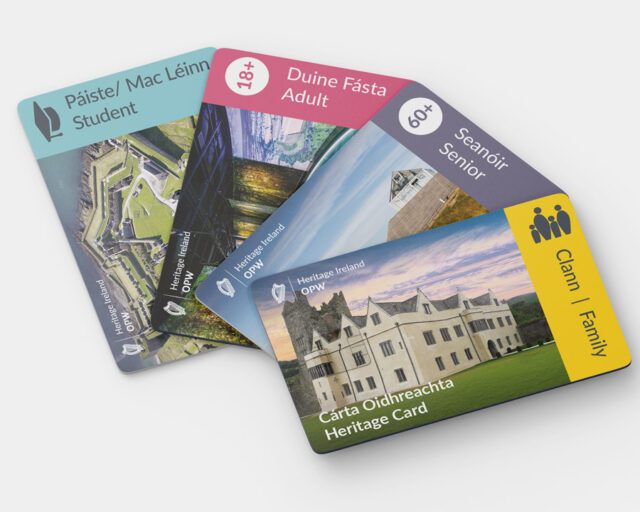Fógra
WARNING: It should be noted that these sites are unguided and a level of care and caution should be maintained during all stages of your visit. The Office Of Public Works (OPW) will not be held responsible for any damages, injuries, or losses that occur
Kilcoolaght East Ogham Stones
A group of seven (possibly eight) fragmentary ogham stones were discovered in a souterrain - an underground passage constructed in the early medieval period for use as a cellar for food storage but which may also have doubled as a hidden refuge in times of crisis. Local tradition records that a church stood on a raised rectangular area of untilled ground alongside a nearby cillín, or burial ground, in close proximity to the souterrain. This claim is supported by the area’s place name Kilcoolaght, or Cill Chuallachta, which indicates that there was an early monastic settlement there.
Ogham is an ancient Irish alphabet and our earliest written source for the Irish language. The ogham alphabet uses a script made of lines cut on, across or either side of a central 'stem' line. Ogham inscriptions were usually written vertically and are read from bottom to top. Ogham stones appear to have been erected either as memorials or territorial markers and usually record the name of a person with a standard formula such as: “X son of Y, member of the tribe of Z”. Although the alphabet was designed for the Irish language, a few Latin inscriptions in ogham also survive in Ireland. There are about 400 surviving ogham inscriptions. Approximately 350 of these are in Ireland, with the largest number of ogham stones located in counties Cork, Kerry and Waterford. Around 50 ogham inscriptions have been discovered in Britain with ogham stones located in Wales, Scotland, The Isle of Mann and in Cornwall and western England.
The largest of the Kilcoolaght ogham stones stands at 76cm high and measures 24cm x 2metres at its base. It is inscribed on all four angles, and features two inscriptions which probably continued across its now missing upper portion. The characters of the second inscription are more finely cut than those of the first, but both are clearly decipherable. These have been read as: ANM VIRR[. . .]ANNI TIGIRN "name of Ferchán of Tigern") and CEDATTOQA MAQI VEDELMET[T]. ("of Cétadach? son of Fedelmid").
The other partial stones in the group have inscriptions that read:
ECC MAQI L[UGUQ]ṚRIT ("of Éc? son of Luccreth")
UMALL
[A]GGO MAQI AGỊ[LL ("...ggo son of Agi...")
DUBE[B and Q/N
[RI]TTẠVV[E]CC MAQ[I] V[E]DDONỌS ("of Rethach son of Feddonos")
URG̣
Visit Historic Environment Viewer for more information on Kilcoolaght East Ogham Stones
Protect our Past - Click here to read about the importance of protecting our country’s unique heritage sites
This national monument is protected in accordance with the National Monuments Acts 1930 to 2014




